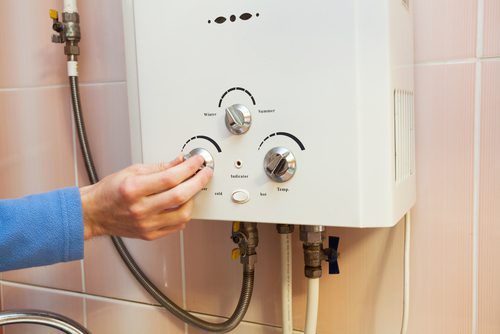How to Care for Your Home's Hot Water System Effectively
How to Care for Your Home's Hot Water System Effectively
Blog Article
We have uncovered this great article pertaining to How to Maintain a Hot Water Heater in a Few Simple Steps below on the web and figured it made good sense to quickly share it with you on this page.

Hot water is necessary for daily convenience, whether it's for a refreshing shower or cleaning recipes. To ensure your warm water system runs efficiently and lasts much longer, normal maintenance is crucial. This article supplies sensible suggestions and understandings on how to preserve your home's warm water system to stay clear of disruptions and expensive fixings.
Introduction
Preserving your home's warm water system might seem difficult, yet with a couple of straightforward steps, you can ensure it runs efficiently for years ahead. This guide covers whatever from comprehending your warm water system to do it yourself maintenance suggestions and understanding when to employ specialist help.
Relevance of Maintaining Your Hot Water System
Routine maintenance not just prolongs the life expectancy of your warm water system yet additionally ensures it operates efficiently. Overlooking upkeep can lead to decreased effectiveness, higher energy expenses, and even premature failure of the system.
Signs Your Hot Water System Needs Maintenance
Understanding when your hot water system needs attention can avoid major issues. Look out for signs such as inconsistent water temperature, strange noises from the heater, or corroded water.
Flushing the Water Heater
Flushing your hot water heater eliminates sediment accumulation, improving performance and prolonging its life.
Checking and Replacing Anode Rods
Anode rods prevent corrosion inside the tank. Inspecting and changing them when broken is critical.
Facility Concerns Requiring Professional Help
Instances consist of major leaks, electrical troubles, or if your water heater is regularly underperforming.
Routine Specialist Upkeep Perks
Specialist maintenance can include complete assessments, tune-ups, and guaranteeing compliance with safety and security criteria.
Examining and Adjusting Temperature Level Settings
Adjusting the temperature level settings ensures optimum performance and safety.
Do It Yourself Tips for Maintenance
You can execute a number of maintenance jobs yourself to keep your warm water system in leading condition.
Looking for Leaks
Regularly evaluate pipes and links for leaks, as these can lead to water damages and greater expenses.
Understanding Your Warm Water System
Before diving right into maintenance jobs, it's useful to recognize the basic parts of your hot water system. Commonly, this includes the hot water heater itself, pipes, anode poles, and temperature controls.
Regular Monthly Maintenance Tasks
Routine monthly checks can assist capture minor concerns before they intensify.
Examining Pressure Alleviation Valves
Testing the stress safety valve ensures it operates appropriately and stops too much pressure accumulation.
Protecting Pipelines
Insulating warm water pipes decreases warmth loss and can save energy.
When to Call a Specialist
While DIY upkeep is beneficial, some problems call for expert expertise.
Final thought
Routine maintenance of your home's warm water system is necessary for efficiency, long life, and cost financial savings. By complying with these pointers and understanding when to look for professional assistance, you can ensure a trusted supply of warm water without unanticipated interruptions.
How to Maintain an Instant Hot Water Heater
Before tinkering with your hot water heater, make sure that it’s not powered on. You also have to turn off the main circuit breaker and shut off the main gas line to prevent accidents. Also turn off the water valves connected to your unit to prevent water from flowing into and out of the appliance. 2. When you’re done, you have to detach the purge valves’ caps. These look like the letter “T†and are situated on either side of the water valves. Doing so will release any pressure that has accumulated inside the valves while at the same time avoid hot water from shooting out and burning your skin. 3. When the purge valves’ caps are removed, you have to connect your hosing lines to the valves. Your unit should have come with three hoses but if it didn’t, you can purchase these things from any hardware or home repair shops. You can also get them from retail stores that sell water heating systems. Read the user’s manual and follow it to complete this task properly. When the hosing lines are connected, open the purge port’s valves. 4. You should never use harsh chemical cleaners or solutions when cleaning your unit. Make use of white vinegar instead. It should be undiluted and you’ll probably use about 2 gallons. 5. Now flush your water heater. This task should probably take about 40 minutes. We can’t give you specific directions for this because the procedure is carried out depending on the type, model and brand of your heater. With that being said, refer to the user’s manual. 6. When you’re done draining the unit, you have to turn off the purge port valves again. Remove the hosing lines that you earlier installed on each of the water valves. Put the valve caps (purge port) back in their respective places and be very careful so as not to damage the rubber discs that are found inside these caps. 7. Now that everything’s back in place, check your user’s manual again to find out how to reactivate your water heating system. 8. Once it is working, turn one of your hot water faucets on just to let air pass through the heater’s water supply pipes. Leave the tap on until water flows smoothly out of it. https://www.orrplumbing.com/blog/2014/september/how-to-maintain-an-instant-hot-water-heater/

We hope you liked our topic on Tips on Maintaining a Water Heater. Thanks so much for taking the time to browse our content. Feel free to take the opportunity to distribute this post if you appreciated it. Thanks a lot for your time. Return soon.
Click Here Report this page